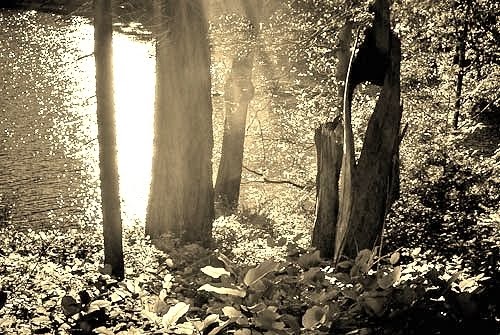June
work-shopping session. Working with detail.
Simplicity
is not an end in art, but one reaches simplicity in spite of oneself,
by approaching the real meaning of things.
Brancusi
If you recall, the assignment
last month was on DETAIL . Specifically to create four photographs
that shared a common detail, however you conceived that to be. There
was some confusion as to what detail was: was it 'detail' as in all
those little bits of stuff in our photograph, or 'Detail' as
Szarkowski defines it as the important element among the many that
will express what we think or feel, or is it something broader and
could be also named as 'theme'?
At the beginning of this session
Simon and Greg both had a shot at clearing up the vagueness
associated with the concept of the detail. Essentially theme is a
broader classification and detail is the tool that we use to express
it. For example, I might be thinking about 'flow' as the theme of
spring snow melt and runoff, but will use the detail of
falling water to express that idea.
I admit that I found some of the
submitted sets of imagery confusing in terms of whether detail
was the thing in common or a story element or a certain technical
approach. Is a set of images that share a common monochrome treatment
for example really talking about detail? Perhaps in seeking to
broaden the 'detail' idea we have in the process created a certain
vagueness.
The nice thing about this
seminar series however is that we get to return to all the previous
Sazakowskian slices through art photography over and over again even
as we advance to new cross sections: the thing itself, the detail
and, next month, the frame. Be sure to return regularly to
previous month's postings to review and re-establish a sense of
continuity.
During
the process of performing a formal analysis on the sets of four
images we noticed that the photographer's ideas about what detail
formed a common bond was not necessarily obvious to others. A nice
set of images of violinists busily sawing away suggested 'music' to
the viewers, while it was the detail of eyes
that had
placed these together in the photographer's mind. Turns out that
visual communication is difficult. While photographs can inform and
move us 'in the blink of an eye', there is no accurate way of
controlling how that will work for each viewer. We bring ourselves to
each thing we see.
So,
what we can communicate depends on our own personal development, what
we are capable of understanding and transmitting, and upon the
capacity of the viewer to go to that place also. It is the struggle
to bring all the disparate strands together, the sheer difficulty and
possible variety that make the whole process challenging and
rewarding for all concerned.
The frame. A quick
forward glance to next month.
.jpg) |
Here are some examples of framing ( Ansel Adams) to get you thinking about this powerful design tool. You have a month, why not experiment with detail and frame?
|
We
will have noticed that it is difficult to discuss detail within a
photograph without wandering into the framing of that detail. In
photography, unlike in the gradual development of a painting, every
consideration about subject matter, selection of the relevant detail,
how it will be framed, depth of field, shutter speed, and so on, must
come together at the moment of capture. A broad collection of design
and technical camera issues come together at the crunch moment of
'click'!
We
capture our detail, what our image will contain, and at the same time
are framing it, deciding what will be within the walls of the frame
and how those details will be arranged. Much of what we end up
discussing in the formal analysis work-shopping sessions has to do
with concerns around framing.
Here
is an example I took recently based upon a Chuck Close self
portrait, painted square by square. With a Lucite cover of a lighting
fixture and a mini camera held at arm's length I had the means to
experiment with his original idea. That was my capture of the detail,
but of course I needed to decide what was in or out of the eventual
frame, so I cropped to a tall narrow frame and I decided that the
hand was important in my version, but the background was not. ( As Greg would point out, the hand of the artist is visible. :)
.jpg)
.jpg) |
| Chuck Close |

.jpg)
.jpg)
.jpg)
.jpg)